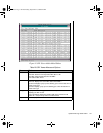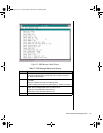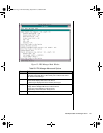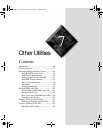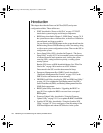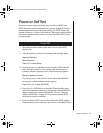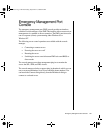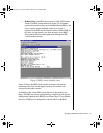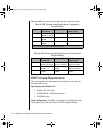
126 Maintaining and Troubleshooting the Gateway ALR 9200 Server
Introduction
This chapter describes the Power-on Self Test (POST) and system
configuration utilities. These utilities are:
• POST: described in “Power-on Self Test” on page 127. POST
checks basic system integrity and all major components.
• BIOS Setup: described in Chapter 5, “BIOS Setup” on page 79. If
the system does not have a diskette drive, or the drive is disabled or
misconfigured, use Setup to enable it.
Or, you can move the CMOS jumper on the system board from the
default setting (Protect CMOS memory) to the Clear setting; doing
so allows most system configurations to boot. Then run the SSU to
configure the system.
• Server Setup Utility (SSU): described in Chapter 6, “The Server
Setup Utility” on page 103. Use for extended system configuration
of onboard resources and expansion cards, viewing the system
event log (SEL), setting boot device priority, or setting system
security options.
Run the SSU from a set DOS-bootable diskettes. See “What You
Need to Do” on page 106 to make a set of SSU diskettes.
Data entered in the SSU overrides data entered in Setup.
• Emergency Management Port (EMP) Console: described in
“Emergency Management Port Console” on page 129. Use the
EMP to access and monitor the server remotely.
• FRUSDR Load Utility: described in “FRU and SDR Load Utility”
on page 145. Use to update the Field Replacement Unit (FRU),
Sensor Data Record (SDR), and Desktop Management Interface
(DMI) flash components.
• BIOS Update Utility: described in “Upgrading the BIOS” on
page 98. Use to update the BIOS or recover from a corrupted
BIOS update.
• Firmware Update Utility: described in “Using the Firmware
Update Utility” on page 151. Use to update the BMC flash ROM.
• Symbios SCSI Utility: described in “Using the Symbios SCSI
Utility” on page 152. Use to configure or view the settings of the
SCSI host adapters and onboard SCSI devices in the system.
3424.boo Page 126 Wednesday, September 2, 1998 9:23 AM




